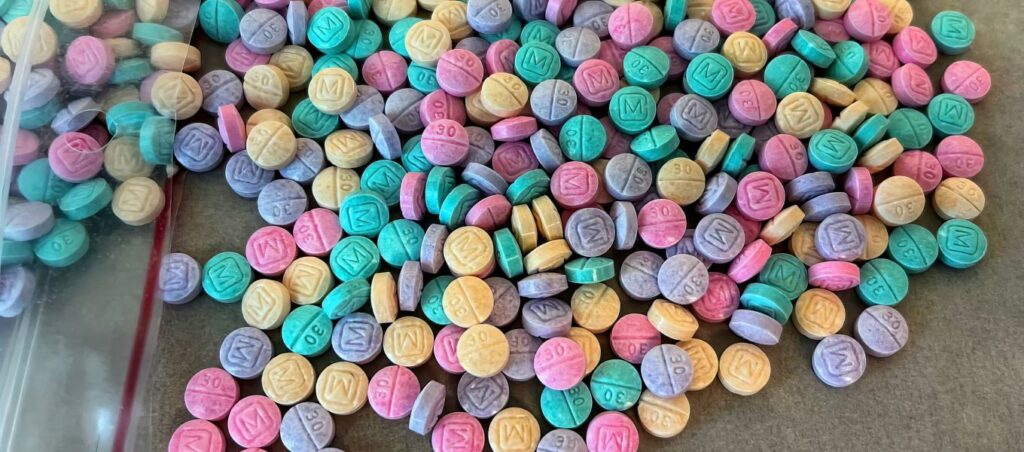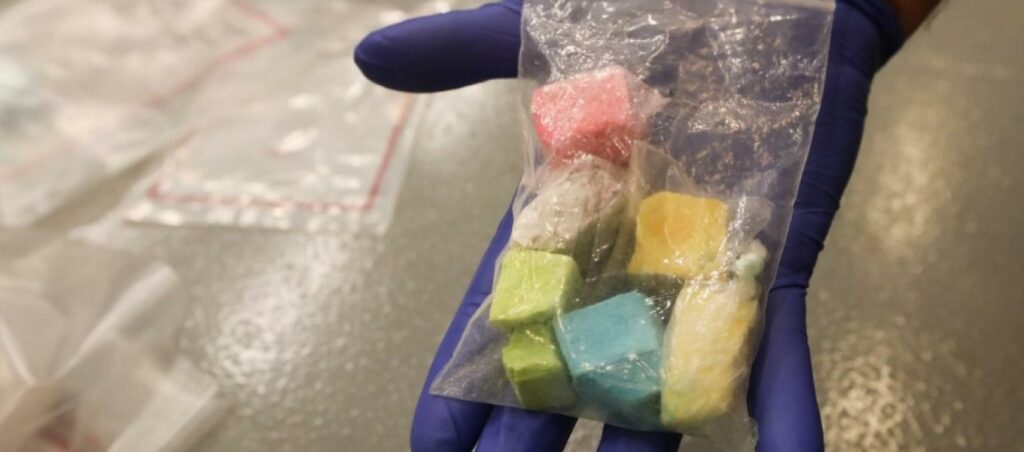
State health officials cautioned school leaders this week about a new and concerning version of the synthetic opioid known as fentanyl.
In a letter to superintendents and charter school administrators, California Department of Public Health Director Tomás J. Aragón sounded the alarm on “rainbow fentanyl,” a potentially fatal drug that comes in a variety of forms and bright colors. The U.S. Drug Enforcement Administration has similarly noted that rainbow fentanyl looks like candy, which could be a way to attract children and young people.
“Rainbow fentanyl can be found in many forms, including pills, powder and blocks that can resemble sidewalk chalk or candy,” said Dr. Aragón, who is also the state’s public health officer. “Any pill, regardless of its color, shape or size, that does not come from a health care provider or pharmacist can contain fentanyl and can be deadly.”
In August, the DEA and its law enforcement partners seized brightly colored fentanyl, including pills, in 18 states. The federal agency says anyone who encounters fentanyl in any form should not handle it and should call 911 immediately.

According to the U.S. Centers for Disease Control and Prevention, fentanyl is roughly 50 times stronger than heroin and about 100 times more powerful than morphine. Even one pill can have fatal consequences, and many fentanyl victims don’t even know they’re taking the drug. That’s because fentanyl is often pressed into counterfeit pills made to look like legitimate prescription opioids, such as oxycodone, or even anxiety medications like Xanax. Because it’s cheap to produce, it’s also showing up in other street drugs like cocaine, heroin and MDMA.
“The DEA confiscated over 20 million counterfeit pills in 2021,” said Stephan Lambert, OCDE’s coordinator of prevention education. “If you buy a pill from anywhere other than a pharmacy, you should assume that it’s fentanyl. It’s virtually impossible to tell what is counterfeit, and it’s not worth the risk. When tested, 42 percent of those confiscated pills had a potentially lethal dose of fentanyl.”
The CDC says fentanyl and other synthetic opioids cause most overdose deaths in the country. While these drugs generally have no tell-tale tastes, smells or visual indicators, there are signs associated with opioid overdoses. They include:
- Small, constricted “pinpoint pupils”
- Falling asleep or losing consciousness
- Slow, weak or no breathing
- Choking or gurgling sounds
- Limp body
- Cold and/or clammy skin
- Discolored skin (especially in lips and nails)
The CDC acknowledges that it can be hard to tell whether a person is high or experiencing an overdose, adding that “If you aren’t sure, treat it like an overdose — you could save a life.”
Here’s what federal health officials advise:
- Call 911 immediately. (Most states have laws that protect a person who is overdosing — or the person who called for help — from legal trouble.)
- Administer naloxone if available. (Naloxone is a life-saving medication that can reverse the effects of opioid overdose. It’s available in all 50 states and can be purchased from a local pharmacy without a prescription in most states. Anyone can carry naloxone, and it could potentially save a life.)
- Try to keep the person awake and breathing.
- Lay the person on their side to prevent choking.
- Stay with the person until emergency assistance arrives.
The CDC offers more fentanyl-related facts, tips and resources on its website.
